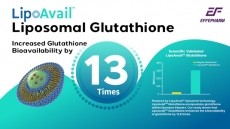FutureCeuticals blends anthocyanins for more benefits
nutritional blend, the first broad spectrum anthocyanin blend on
the market.
The blend is named AnthoComplete and claimed to offer a minimum 10 percent anthocyanins.
It brings together anthocyanins from wild bilberry, wild blueberry, açai, blackcurrant, sweet cherry, raspberry, elderberry, blackberry, black soybean hull, and blue corn.
Shawn Evers, a product manager at FutureCeuticals who led the product development project for AnthoComplete told NutraIngredients-USA.com : " We set out to find the very best sources of anthocyanins from a wide variety of fruits, vegetables and legumes.
"All of the ingredients in AnthoComplete are standardized to specific anthocyanin levels, and have been extensively researched regarding their importance for human health."
Key to the ingredient is the recognition that not all anthocyanins are created equal.
"Each fruit, vegetable and legume provides its own set of unique anthocyanins that are beneficial for human health.
So we set out to provide a blend of the best anthocyanin sources and created AnthoComplete," said Evers.
"AnthoComplete was also created as an affordable alternative to the expensive anthocyanin products currently on the market."
Evers told this website that the new anthocyanin blend can be utilized in a wide variety of applications, ranging from nutritional supplement capsules and tablets, to ready-to-mix beverages such as smoothies, to functional foods such as bars and candy.
The ingredient, available globally exclusively from FutureCeuticals and its distributors around the world, appears to stand alone in the market where anthocyanin products currently available are from one source.
"Bilberry manufacturers, for instance, are offering bilberry products as rich sources of anthocyanins.
Although bilberry is a rich source of anthocyanins, it is only a rich source of bilberry anthocyanins," explained Evers.
"It does not offer a full spectrum of anthocyanins from many fruits, vegetables and legumes."
Anthocyanins are pigments that provide fruit and vegetables with beneficial blue, purple and red coloring, and are a group of healthful compounds that fall within the flavonoid class of plant nutrients.
The launch looks set to tap into increased demand for the antioxidant compounds, reported to offer a range of health benefits, including healthy aging, inflammation management, improved blood sugar metabolism and cardiovascular disease management.
The statement that all anthocyanins are not the same echoes findings by researchers from US Department of Agriculture's Agricultural Research Service (ARS), who carried out research on red cabbage.
Nearly 80 percent of cabbage anthocyanins tested were acylated, meaning attached to acyl groups, which made them more stable and less absorbable.
The non-acylated anthocyanins present were at least four times more bioavailable, or absorbed, than the acylated anthocyanins, the study showed ( Journal of Agricultural and Food Chemistry , Vol. 55, pp 5354-5362).












